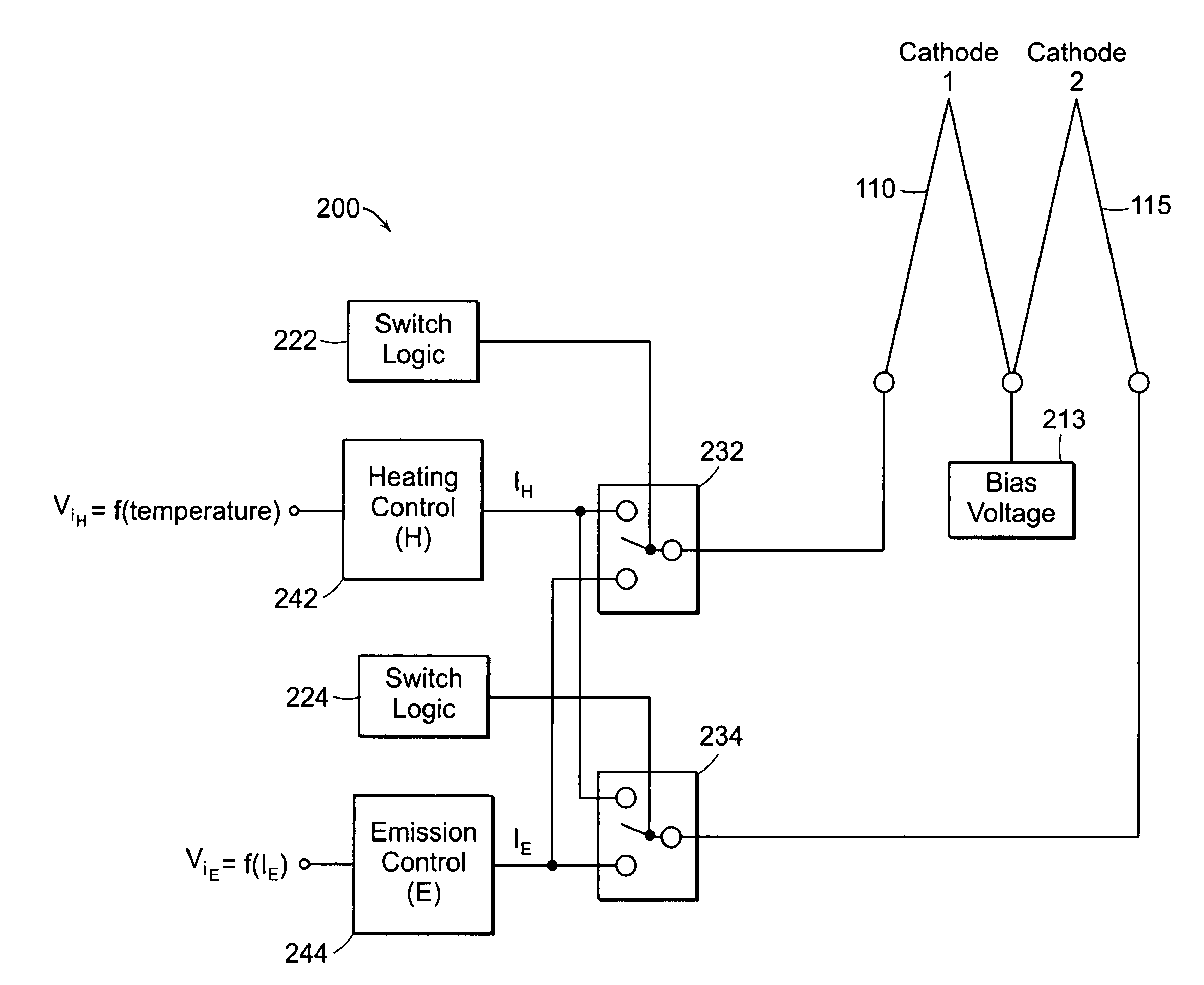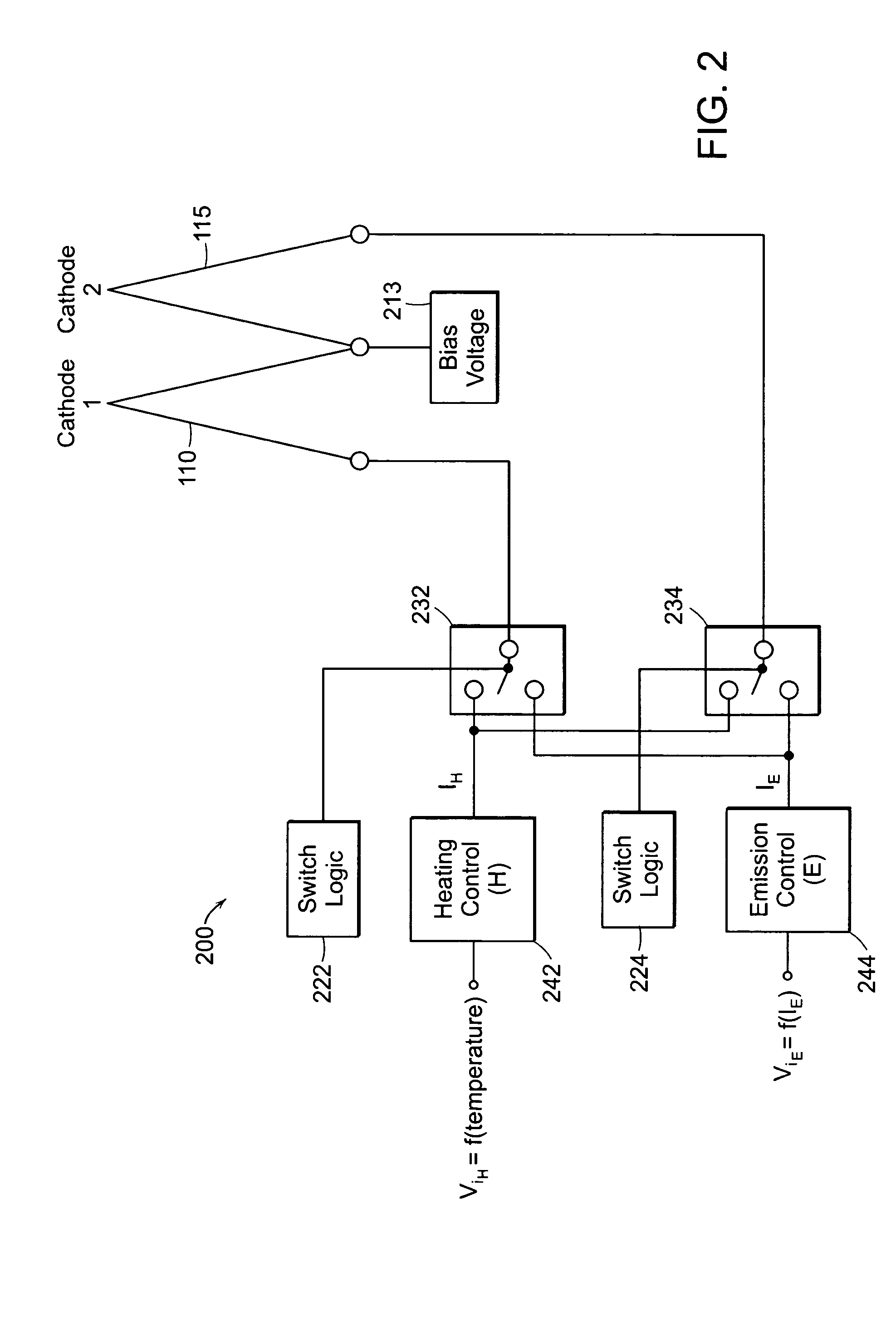Method and apparatus for maintaining emission capabilities of hot cathodes in harsh environments
a technology of ionization gauge and hot cathode, which is applied in the direction of instruments, fluid pressure measurement, gas-filled discharge tubes, etc., can solve the problems of reducing the overall operational life of the hot cathode ionization gauge, degrading the emission characteristics of the gauge's cathode, and even destroying the electron emission characteristics of the cathode. , to achieve the effect of increasing the overall operational life of the hot cathod
- Summary
- Abstract
- Description
- Claims
- Application Information
AI Technical Summary
Benefits of technology
Problems solved by technology
Method used
Image
Examples
Embodiment Construction
[0022]A description of preferred embodiments of the invention follows.
[0023]FIG. 1 is a perspective view of a hot-cathode ionization gauge 100 employing two cathodes 110, 115 according to one embodiment. The hot-cathode ionization gauge 100 includes a cylindrical wire grid 130 (i.e., anode) defining an ionization volume 135 (i.e., anode volume). Two collector electrodes 120, 125 are disposed within the ionization volume 135 and the two cathodes 110, 115 are disposed external from the cylindrical wire grid 130. The above elements of the hot-cathode ionization gauge 100 are enclosed within a tube or envelope 150 that opens into a process chamber via port 155. The hot-cathode ionization gauge 100 also includes a shield 140, such as a stainless steel shield, to shield various electronics components of the ionization gauge from ionized process gas molecules and atoms and other effects of charged particles.
[0024]An ionization gauge controller (not shown) may heat one cathode 110 (e.g., an...
PUM
 Login to View More
Login to View More Abstract
Description
Claims
Application Information
 Login to View More
Login to View More - R&D
- Intellectual Property
- Life Sciences
- Materials
- Tech Scout
- Unparalleled Data Quality
- Higher Quality Content
- 60% Fewer Hallucinations
Browse by: Latest US Patents, China's latest patents, Technical Efficacy Thesaurus, Application Domain, Technology Topic, Popular Technical Reports.
© 2025 PatSnap. All rights reserved.Legal|Privacy policy|Modern Slavery Act Transparency Statement|Sitemap|About US| Contact US: help@patsnap.com



